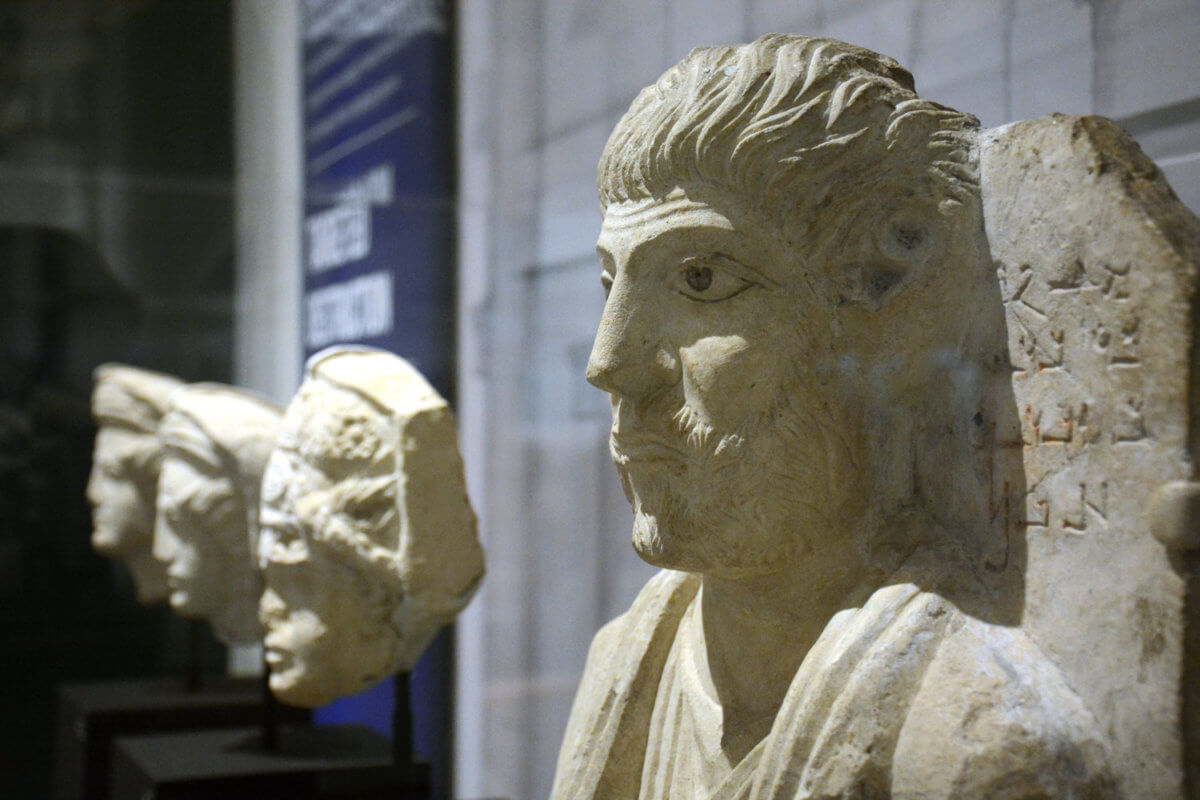The timeliness of Penn Museum’s new exhibit, “Cultures in the Crossfire: Stories From Syria and Iraq,” is sadly apparent immediately upon entering the gallery. The first item on display is not, as one would assume from a museum of archaeology and anthropology, an ancient artifact. Instead, it’s a three-screen video installation depicting nests made of sticks being repeatedly set aflame and allowed to burn.
The piece, according to artist Issam Kourbaj, is a response to air strikes killing Syrian civilians, an idea that couldn’t help but resonate less than 24 hours after the U.S. launched a missile strike against a Syrian airfield.
A first for Penn Museum, the Syrian-born, U.K.-based Kourbaj has created a series of “art interventions” laced throughout “Cultures in the Crossfire,” which examines the destruction of cultural heritage in war-torn regions. The artist’s intention, Kourbaj explained at a preview of the exhibit, was to plant an idea in the minds of visitors: “What is the future of my past?”
Documentary footage of a mosque bombed by the Assad regime and a 3,000 year-old Assyrian palace destroyed by ISIS provides a glimpse of what is happening to irreplaceable sites and artifacts across the conflict-torn Middle East. “Cultures in the Crossfire” attempts to bring those ancient cultures and their long-lasting but threatened traditions to life. The region’s identity as the “cradle of civilization” is represented by a collection of centuries-old texts on science, mathematics and music; its religious diversity by a Torah scroll, a Quran frontispiece and a Christian lamp placed in close proximity.
“These artifacts have been chosen carefully to reflect the stories of these two countries, lands of both rich culture and diverse peoples,” says Dr. Salam Al Kuntar, the exhibit’s Syrian-born lead curator. Dr. Richard Leventhal, executive director of Penn’s Cultural Heritage Center, adds his hope that the show “highlights not only the histories of Iraq and Syria, and not only what’s going on today, but also the potential future of the region.”
Kourbaj summed up his desires for the show by holding up a bar of Aleppo soap, which has been made from olive oil and laurel in the Syrian city for centuries and is the basis of one of his moving “interventions.” Thinking of the materials turned to art and then destroyed, he reminisces, “My mother used to pray for me to touch the worthless and make it priceless. What would be priceless for me is for visitors not to wash their hands of this struggle and instead, reflect upon the cultural heritage of Aleppo and Syria.”
If you go:
Cultures in the Crossfire: Stories From Syria and Iraq
April 8-Nov. 2018
Penn Museum
3260 South St.
$10-$15 admission, 215-898-4000
www.penn.museum




























